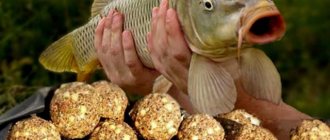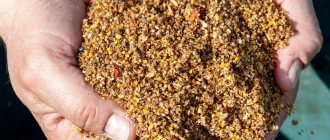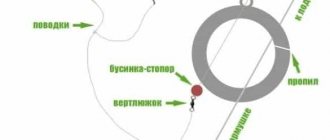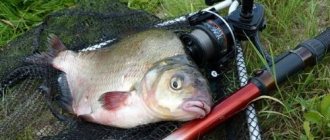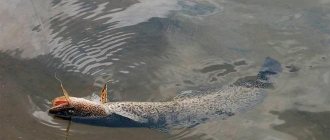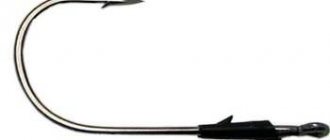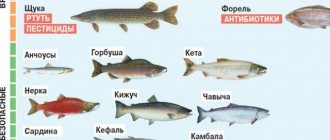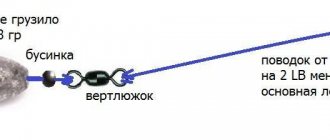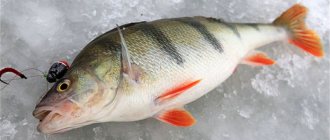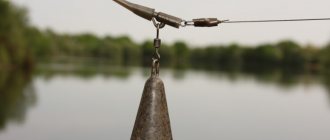Buy quality products at affordable prices in the best fishing online stores
. Give gifts to yourself and your loved ones!
we are in social networks
— subscribe to us on Facebook, Youtube, VKontakte and Instagram. Stay up to date with the latest site news.
The most productive period for fishing bream is considered to be summer and several spring and autumn months. At this time, the water is heated to its maximum and the fish’s digestive processes proceed much faster. Bait for bream when fishing on a feeder should consist of high-calorie elements: store-bought powder, biscuits, peas, corn, maggots and bloodworms. Liquid aromas with vanilla, anise, fruit and other sweet aromas are often added to mixtures.
Bream loves to eat, so the angler’s task is to create a feeding spot that will keep it in one place for a long time. Large bream will not be content with crackers or dust particles. Or rather, such a dubious pleasure for them will last 10-20 minutes. If there is no larger, high-calorie food at the bottom, the bream will not stay at the point for long.
Recipe for bait for bream using feeder No. 1
This recipe is suitable for medium to fast flowing waters. The basic components of the bait are boiled millet or peas. For preparation we will need:
- Boiled peas – 1 kg
- Boiled millet – 1 kg
- Breadcrumbs – 1 kg
- Store-bought bait (bream) – 2 kg
- Liquid aromatics (molasses) – 300 ml
- Maggot – 4 servings
- Chopped worm – 1 serving
- Clay or soil (if we fish in a strong current) – 1 kg
A few words on cooking peas. We cook it as usual - so that the water completely boils away. Add 3 cups of water to 1 cup of peas and cook over medium and low heat, stirring occasionally. It is better to cook in a metal or aluminum pan so that the porridge does not burn. It's even better to cook in a pot.
After cooking, wrap the pan with a towel and leave the bait to simmer for an hour or two. After this, we remove the peas and grind them in a meat grinder, but not all of them, so that we get such a loose and homogeneous mass, somewhat reminiscent of flakes. We will add the second part of the peas, not ground, to the feeders in small portions, the so-called plugs.
Cook the millet for 10 minutes until the grains open. For one glass of cereal you will need 3 glasses of water. We wait until the water has completely gone and we get something like this:
As a result, we will get very crumbly millet, which will be easily washed out of the feeder:
Let the millet brew for 30 minutes and mix it with ground peas. When fishing, we first add store-bought bait and crackers. Before this, we pass them through a medium sieve. Then add clay and mix everything well. After this, add half the maggot and the entire portion of the chopped worm and pour in the molasses. Mix everything and put one part in a container and put it in the shade, and pour the second part into a bait bucket:
Feeder fishing for bream involves abundant starting feeding using a volumetric feeder of this type:
After starting feeding, we use a regular feeder. We stuff maggots and some peas into it using stoppers.
About bait
Autumn bait consists, just like in summer, mainly of plant components. You can use both purchased summer ones and homemade mixtures. If you make your own, you have the opportunity to experiment with the composition of the bait and smells. To find out what smells bream like in the fall in a particular body of water, you need to alternately use different flavors. It is known that bream and bream love the smell of coriander, cinnamon, hemp, sunflower seeds and vanilla. This set of aromas is enough to select the suitable smell of bait.
We recommend reading: Podust fish
The composition may include the following herbal components:
- boiled or canned peas;
- porridge from pearl barley, millet, oatmeal, wheat;
- breadcrumbs;
- animal feed;
- cake and bran;
- peanut;
- ground roasted seeds;
- corn and oat flakes.
Important: you shouldn’t mix a lot of ingredients, just take two or three and add flavoring. It will be much better if the bait comes out with a distinct smell than with an incomprehensible “bouquet”. The mixture should have a pleasant smell and must be fresh.
Although bream fishing in the fall is extended throughout the whole day, weakening in the bite is sometimes observed. In such cases, fishermen use additional feeding with the addition of live food. Adding maggot to the ready-made, moistened mixture stimulates the fish to bite well. It has long been noted that fish may not even eat larvae, but they have a positive effect on the bite.
The activity of bream increases in September, but at the same time its caution also increases. Therefore, before you start fishing, make a large starting feed, and when fishing, use small additional portions. Adding a small amount of bloodworms, maggots or chopped worms will make the bait universal, additionally attracting other types of fish.
Recipe No. 2
To prepare this recipe we need the following ingredients:
- Millet – 1 kg
- Rusks - 1 kg
- Ground roasted seeds – 500 grams
- Black bread – 500 grams
- White bread – 500 grams
- Vanillin packet
- Chopped worm – 1 serving
First, prepare the millet as in recipe No. 1. Next, take the bread and cut it into small pieces. Next, take the seeds and grind them with a manual or electric meat grinder along with the bread. We should have a fragrant mass:
We put millet, vanilla, and crackers into the bait, and we get bait that is suitable for fishing on the current with a feeder. At the pond, add pinches of chopped worms to the feeders. This bait is enough for one standard feeder session using 1-2 fishing rods.
Recipe No. 3
To prepare bait according to this recipe we will need the following ingredients:
- Boiled peas – 1 kg
- Boiled millet – 1 kg
- Cake – 500 g
- White breadcrumbs – 500 g
- Fish food – 400 g
- Hercules – 500 g
- Salt – 1 teaspoon
- Granulated sugar – 5 tablespoons
- Ground coriander – 1 teaspoon
- Cinnamon – 1 tbsp. spoon
We cook pea and millet cereals in the same way as in previous recipes and pass them together through a meat grinder. After this, add crackers and flour. Pour boiling water over the Hercules and leave to simmer for a few minutes. Then drain the water and add rolled oats to our bait.
After this, add flavorings and preservatives in the specified quantities. First, mix these components well in one bowl and add them to the bait.
When fishing, add water or chocolate-flavored molasses. Bream loves sweet smells, especially the smell of chocolate. Therefore, during fishing, you can gradually add molasses to the bait or dip it with chocolate spray. Homemade aromas based on fruit syrups performed well. They are mixed with water and added to complementary foods instead of molasses or dips. Again, chocolate, vanilla, raspberry, strawberry and melon syrups are suitable for bream.
This bait is designed for one 5-6 hour fishing trip using 1-2 fishing rods. Moreover, this implies constant feeding of the point every 5 minutes.
Recipe No. 4
Another successful recipe for catching bream consists of the following ingredients:
- Steamed rolled oats, ground in a meat grinder – 1 kg
- Breadcrumbs – 2 kg
- Finely ground macadamia – 1 kg
- Ground hemp seeds – 30 g
- Ground coriander – 100 grams
- Canned corn – 2 jars
- Cocoa powder – 4 spoons
- Vanillin packet – 1 sachet
- Coconut flakes – 100 grams
Mix all components in one container. We add corn directly on the shore. We should get both crumbly and high-calorie bait. Corn grains will attract bream to the fishing point. They will highlight the feeding spot and make it more noticeable. To further highlight the bait, many feeders add pastoncino to its composition. These bright pieces “color” the bait.
Recipe No. 5
To prepare bait for this recipe we will need the following ingredients:
- Store-bought bream mixture – 1 kg
- Ground peanuts – 500 grams
- Canned corn – 400 grams
- Breadcrumbs – 1 kg
- Biscuit cookies – 1 kg
- Molasses – 0.5 l
We mix all the ingredients on the shore in a large container. Be sure to pass the bulk components through a medium sieve. We grind the cookies at home in a meat grinder. We use sweet, dark molasses. We fill it in several approaches. First, fill in half and mix the bait. Then after 10-15 minutes add the second part. As a result, we should get the following bait:
When fishing, if necessary, you can moisten it or, conversely, add granules, making it more crumbly.
Autumn bait
The standard feeder bait for autumn includes the following components:
- 100 grams of rice porridge;
- 100 grams of breadcrumbs;
- 100 grams of bran;
- 100 grams of sunflower cake;
- 2 boxes of bloodworms;
- 40 grams of lard, which needs to be processed in a meat grinder.
In the fall, most fish actively store fat for the winter. They begin to experience the so-called zhor. That is why they readily respond to high-calorie bait.
How to rationally prepare bait?
If our bait consists of a large number of dry ingredients, then the best option would be to prepare 10-15 kg of dry bait in the store-bought manner and package it in 2 kg bags. The only component that should not be added is breadcrumbs. The fact is that over time they lose their freshness and aroma. It is better to buy crackers fresh or make your own.
Rusks are obtained from the remaining pieces of bread. They are dried in the microwave and passed through a meat grinder. It is best to store them in five-liter plastic bottles in a cool place.
We cook porridge for every fishing trip. The only option is to cook 10 kg of cereals and place them in the refrigerator. If your refrigerator has a spacious freezer, then use this option. When you go fishing, you take several kilograms of dry and liquid bait and add aromas, worms and maggots to it.
Catching bream in autumn - Features of behavior
In stable warm weather, when the water temperature is still around 12-15 degrees, the behavior of bream changes slightly compared to the summer period. The flock is dispersed throughout the entire water area of the reservoir and is active.
As it gets colder, it goes deeper, heading for places with warm water and plentiful food. Changes in fish behavior are observed. Extreme timidity, caution, and pickiness in food come to the fore. He takes the bait timidly, in several approaches, taking a break after 2-3 trials.
"Bream fishing in autumn"
Towards the end of September, the gluttony begins. There is a lot of fish, often, greedily, fattening up before winter.
This fact is important, since the composition of bait and bait must be enriched with nutritious protein products that are most attractive to autumn bream.
Changes are observed in the frequency and duration of feeding. These periods are different, and if in some reservoirs the best bite is observed in the morning, then in others the optimal time for successful fishing is evening and night.
Bream always feed in the fall at the same favorite spots. And it will not be possible to lure the flock to another place with any bait. Therefore, if the fishing point is chosen incorrectly, the fishing result will be zero. And, conversely, in the right area the bite is always excellent, and less bait and complementary food is required.
Where to look for bream in the fall?
The best places in the off-season are considered to be reservoirs with a muddy bottom. Fish are usually found in areas of riverbed dumps 6-10 meters deep, where crustaceans, bloodworms, and dreisena accumulate—the main food for bream in the fall. When the food supply is depleted, the flock moves to a new site.
Most of the time in the middle and end of autumn, the flock is in the pits. It rarely comes out to feed, at certain hours.
Changes in weather have an impact on the bite. On sunny days, bream emerges more willingly from deep holes.
In such weather, you can look for it in areas of the bottom with smooth relief, clearly visible among the depths. If there are ruts and grooves on a flat bottom, the fish will happily climb into them.
When there is a sudden change in weather or pressure changes, the fish prefers to stay in the middle layers of water. Under favorable weather conditions, it feeds closer to the shore, in thickets of aquatic plants.
Around 12 noon it goes to medium depth. With the onset of darkness, in the evening and at night, bream becomes bolder than during the day. Large specimens sometimes approach the very shore.
Features of autumn fishing by month
In September, when the summer warmth still persists, the bite is quite active. If the weather is good, clear and calm, it is best to catch bream in the early morning or evening, at sunset.
Cloudy, windy September weather is not the best time for fishing. Under such conditions, the bite can be good only if you can find a relatively calm area in the reservoir.
With the onset of October, fish activity decreases, which becomes noticeable by the deterioration of the bite. The flock devotes no more than 4 hours a day to feeding, so for successful fishing you need to get within this time period.
In November, you should only look for bream in very deep places. The bite is unstable even with good complementary foods and the right fishing point.
